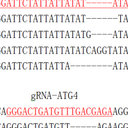Characteristics and contributions of hyperandrogenism to insulin resistance and other metabolic profiles in polycystic ovary syndrome.
キーワード
概要
OBJECTIVE
To investigate the different characteristics in Chinese Han women with polycystic ovary syndrome, and to analyze the significance of hyperandrogenism in insulin resistance and other metabolic profiles.
METHODS
A cross-sectional study.
METHODS
Medical university hospital.
METHODS
A total of 229 women with polycystic ovary syndrome aged 18-45 years.
METHODS
Women with polycystic ovary syndrome, diagnosed by Rotterdam criteria, were divided into four groups according to the quartile intervals of free androgen index levels.
METHODS
Comparisons between groups were performed using one-way analysis of variance. Stepwise logistic regression analysis was performed to investigate the association between homeostasis model assessment-insulin resistance and independent variables.
RESULTS
Within the four phenotypes, women with phenotype 1 (hyperandrogenism, oligo/anovulation, and polycystic ovaries) exhibited higher total testosterone, free androgen index, androstenedione, low-density lipoprotein, and lower quantitative insulin sensitivity check index (p < 0.05); women with phenotype 4 (oligo/anovulation and polycystic ovaries) showed lower total cholesterol, low-density lipoprotein, and homeostasis model assessment-insulin resistance, but higher high-density lipoprotein (p < 0.05). The levels of triglycerides, total cholesterol, low-density lipoprotein, and homeostasis model assessment-insulin resistance significantly increased, but high-density lipoprotein and quantitative insulin sensitivity check index decreased with the elevation of free androgen index intervals. After adjustment for lipid profiles, free androgen index was significantly associated with homeostasis model assessment-insulin resistance in both lean and overweight/obese women (odds ratio 1.302, p = 0.039 in lean vs. odds ratio 1.132, p = 0.036 in overweight/obese).
CONCLUSIONS
Phenotypes 1 and 4 represent groups with the most and least severe metabolic profiles, respectively. Hyperandrogenism, particularly with elevated free androgen index, is likely a key contributing factor for insulin resistance and for the aggravation of other metabolic profiles.




